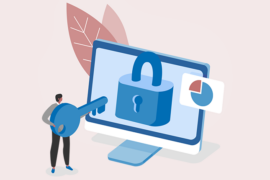Understanding the B2B Buyer’s Journey is very important in today’s time owing to its complexity of the stages involved.
Our online research reveals that 74% of B2B buyers conduct more than half of their research online before making a purchase decision. (Source: Forrester Research) and 57% of the B2B buying process is completed before a buyer even contacts a supplier. (CEB, now part of Gartner)
However with the lack of insight, many businesses today struggle to understand where their potential customers are and what they need and integrating the right marketing and sales effort becomes a challenge.
Having a solid understanding of the B2B buyer’s journey is very important for businesses operating in the complex and constantly changing world of B2B sales and marketing.
This thorough understanding acts as a compass for businesses, giving them precise instructions on how to proceed from the point of initial prospect i.e awareness to ultimate conversion of the lead.
Understanding the B2B buyer’s journey is critical for a business for several reasons :
1. Tailored marketing :
When you are aware of the buyer’s journey, you are more likely able to create personalized and unique plans that can increase the likelihood that potential customers will choose your company over your competitors.
For example, if they are just learning about your products or services, you can provide educational content; if they’re closer to making a decision, you can offer specific details and benefits. This personal touch makes them feel like you’re speaking directly to their needs and concerns.
80% of B2B buyers expect you to know what they need. – CSO Insights
2. Better Customer Experience :
A thorough understanding of the buyer’s journey largely helps businesses make their clients happy by giving them a smooth and friendly experience.
Our research tells that 86% of buyers will pay more for a great customer experience. – PwC
Moreover satisfied clients are more likely to remain loyal to your brand and to carry on doing business with you. In addition, they turn into brand ambassadors, referring others to your products or services. This kind of word-of-mouth advertising is highly effective in attracting new clients.
3. Effective Resource Allocation:
Did you know that only 33% of B2B marketing budgets are spent on content marketing, despite its effectiveness. – Content Marketing Institute
Thus it is very essential to know where your customers are in the purchasing process so that you can invest your money and effort wisely on what matters most.
By concentrating on the appropriate areas, you can maximize your resources and achieve the best outcomes. It’s a way to ensure your efforts are directed where they can have the biggest impact.
4. Build Long-Term Relationships:
When you understand a buyer’s journey, you become aware with the fact that it’s just not about making a single sale, but more about nurturing long term relationships that pays off for years. Here’s why its so vital :
A 5% increase in customer retention can increase profits by 25% to 95%. – Bain & Company
Long-term relationships are the foundation of sustainable growth and success because loyal customers are not only more profitable in the long run but also turn into your brand advocates, promoting your goods and services to others.
Evolution of B2B Buyer’s Journey
The Traditional Buyer’s journey :
In the past, the B2B Buyer’s journey was fairly a simple process. It was like following a straightforward map with only a few distinct steps :
Awareness: The beginning of a buyer’s journey with a product or service was usually started by word-of-mouth recommendations, industry events, or traditional advertising.
Consideration: After learning about the product or service, the buyer would proceed to the next phase, which involved learning more about it, possibly contacting the supplier for brochures, seeing product demonstrations, or even requesting proposals.
Decision: Following data collection and analysis, the buyer would then decide on a course of action that was usually fairly simple: if the good or services satisfied his requirements and budget, he would proceed with the purchase.
For years, marketers were guided by this linear model. It was as simple as obtaining information and making a decision based on the information that was provided.
Now, this simplicity has changed over time to become a more complex process with more factors to take into account.
Thus, it’s critical to understand that the B2B buyer’s journey of today is anything but linear.
We will now analyze the Buyer’s journey in 2023 using industry standards and enlightening insights.
Awareness Stage :
This stage is no longer exclusively brought about by a problem. Instead, buyers are more proactive and engage with leadership articles, industry events before they even recognize they have a problem. This behavior is driven by a desire for innovation and continuous improvement.
Data insight : Our online research revealed that 74% of B2B buyers acknowledged that they look into possible solutions even in the absence of an urgent issue that needs to be resolved.
Now, when a business learns about a product it might need, they take their time and conduct independent research. This helps to better understand their option rather than simply jumping to a conclusion right away.
This stage includes things like :
- Reading reports, articles, and reviews to gain insight
- Watching videos or tutorials to learn more about the product or service
- Asking trusted sources or industry peers for recommendations
The goal is to be informed and explore all the options available.
Consideration Stage :
The consideration stage has evolved to include not only evaluating products but also evaluating the thought leadership and credibility of providers. Today buyers are looking to ensure they’re partnering with industry leaders who can help them stay ahead of the competition.
Thus they consider factors like :
- Cost and effectiveness
- Features, benefits, and the degree to which the product or service meets its needs
- Comparing different providers or solutions
The goal is to ensure that the best option is selected after a thorough analysis.
Data insight: According to Demand Gen Report, during this stage 72% of B2B buyers prioritize content that showcases a provider’s industry expertise and thought leadership.
Purchase and Post Purchase Stage :
After the evaluation stage, Business comes to the point where it needs to make a purchase decision. At this point, it has considered the advantages and disadvantages. Thus it is prepared to commit to a particular good or service because they are confident that it will meet their needs.
Post purchase stage is not the end; it’s the beginning of a deeper relationship. This stage has evolved beyond traditional customer support and is now a continuation of the building of long term relationships. Exceptional customer experiences can lead to advocacy, referrals, and even upselling opportunities.
Thus in short, the ability to deliver value, establish connections, provide ongoing support, and adjust to changing needs are critical components of success in the modern B2B buyer’s journey, which embraces long-term partnerships and mutual growth.
If you find yourself seeking professional guidance on getting leads, just drop a comment below. You can also connect with experts at Neolen for personalized assistance or visit our other blogs to learn more about B2B Buyer’s journey and ultimately get potential clients for your business.





